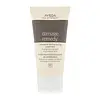What's inside
What's inside
 Key Ingredients
Key Ingredients

No key ingredients
 Benefits
Benefits

 Concerns
Concerns

 Ingredients Side-by-side
Ingredients Side-by-side

Water
Skin ConditioningCetearyl Alcohol
EmollientCetyl Alcohol
EmollientBehentrimonium Chloride
PreservativePropanediol
SolventStearalkonium Chloride
PreservativeCaprylic/Capric Triglyceride
MaskingHydroxypropylgluconamide
HumectantHydroxypropylammonium Gluconate
HumectantAspergillus Ferment
Skin ConditioningArginine
MaskingRice Amino Acids
Skin ConditioningPersea Gratissima Oil
Skin ConditioningMauritia Flexuosa Fruit Oil
Skin ConditioningSclerocarya Birrea Seed Oil
HumectantCetrimonium Chloride
AntimicrobialHydroxyethylcellulose
Emulsion StabilisingTetrasodium Glutamate Diacetate
Parfum
MaskingPhenoxyethanol
PreservativeEthylhexylglycerin
Skin ConditioningWater, Cetearyl Alcohol, Cetyl Alcohol, Behentrimonium Chloride, Propanediol, Stearalkonium Chloride, Caprylic/Capric Triglyceride, Hydroxypropylgluconamide, Hydroxypropylammonium Gluconate, Aspergillus Ferment, Arginine, Rice Amino Acids, Persea Gratissima Oil, Mauritia Flexuosa Fruit Oil, Sclerocarya Birrea Seed Oil, Cetrimonium Chloride, Hydroxyethylcellulose, Tetrasodium Glutamate Diacetate, Parfum, Phenoxyethanol, Ethylhexylglycerin
Water
Skin ConditioningCetearyl Alcohol
EmollientDimethicone
EmollientStearalkonium Chloride
PreservativeBehentrimonium Chloride
PreservativePhenyl Trimethicone
Skin ConditioningGlycerin
HumectantStearyl Alcohol
EmollientRicinus Communis Seed Oil
MaskingChenopodium Quinoa Seed Extract
Skin ConditioningSimmondsia Chinensis Seed Oil
EmollientLimnanthes Alba Seed Oil
Skin ConditioningHippophae Rhamnoides Oil
EmollientFusanus Spicatus Wood Oil
MaskingHordeum Distichon Extract
Skin ProtectingPhellodendron Amurense Bark Extract
Skin ConditioningHelianthus Annuus Seed Oil
EmollientLactic Acid
BufferingSqualane
EmollientTocopherol
AntioxidantGlycine Soja Oil
EmollientCoco-Caprylate/Caprate
EmollientDimethiconol
EmollientBehenamidopropyl Ethyldimonium Ethosulfate
Dimethiconol Meadowfoamate
EmollientHydroxyethylcellulose
Emulsion StabilisingPolyquaternium-10
Sodium Gluconate
Skin ConditioningAlcohol Denat.
AntimicrobialParfum
MaskingLimonene
PerfumingLinalool
PerfumingCitronellol
PerfumingPotassium Sorbate
PreservativePhenoxyethanol
PreservativeWater, Cetearyl Alcohol, Dimethicone, Stearalkonium Chloride, Behentrimonium Chloride, Phenyl Trimethicone, Glycerin, Stearyl Alcohol, Ricinus Communis Seed Oil, Chenopodium Quinoa Seed Extract, Simmondsia Chinensis Seed Oil, Limnanthes Alba Seed Oil, Hippophae Rhamnoides Oil, Fusanus Spicatus Wood Oil, Hordeum Distichon Extract, Phellodendron Amurense Bark Extract, Helianthus Annuus Seed Oil, Lactic Acid, Squalane, Tocopherol, Glycine Soja Oil, Coco-Caprylate/Caprate, Dimethiconol, Behenamidopropyl Ethyldimonium Ethosulfate, Dimethiconol Meadowfoamate, Hydroxyethylcellulose, Polyquaternium-10, Sodium Gluconate, Alcohol Denat., Parfum, Limonene, Linalool, Citronellol, Potassium Sorbate, Phenoxyethanol
Ingredients Explained
These ingredients are found in both products.
Ingredients higher up in an ingredient list are typically present in a larger amount.
This ingredient is a preservative and often used for it's anti-static properties. You'll most likely see this ingredient in hair conditioners.
It does not cause irritation or sensitization in leave-on products at 1-5%.
Cetearyl alcohol is a mixture of two fatty alcohols: cetyl alcohol and stearyl alcohol. It is mainly used as an emulsifier. Emulsifiers help prevent the separation of oils and products. Due to its composition, it can also be used to thicken a product or help create foam.
Cetearyl alcohol is an emollient. Emollients help soothe and hydrate the skin by trapping moisture.
Studies show Cetearyl alcohol is non-toxic and non-irritating. The FDA allows products labeled "alcohol-free" to have fatty alcohols.
This ingredient is usually derived from plant oils such as palm, vegetable, or coconut oils. There is debate on whether this ingredient will cause acne.
Due to the fatty acid base, this ingredient may not be Malassezia folliculitis safe.
Learn more about Cetearyl AlcoholHydroxyethylcellulose is used to improve the texture of products. It is created from a chemical reaction involving ethylene oxide and alkali-cellulose. Cellulose is a sugar found in plant cell walls and help give plants structure.
This ingredient helps stabilize products by preventing ingredients from separating. It can also help thicken the texture of a product.
This ingredient can also be found in pill medicines to help our bodies digest other ingredients.
Learn more about HydroxyethylcelluloseParfum is a catch-all term for an ingredient or more that is used to give a scent to products.
Also called "fragrance", this ingredient can be a blend of hundreds of chemicals or plant oils. This means every product with "fragrance" or "parfum" in the ingredients list is a different mixture.
For instance, Habanolide is a proprietary trade name for a specific aroma chemical. When used as a fragrance ingredient in cosmetics, most aroma chemicals fall under the broad labeling category of “FRAGRANCE” or “PARFUM” according to EU and US regulations.
The term 'parfum' or 'fragrance' is not regulated in many countries. In many cases, it is up to the brand to define this term.
For instance, many brands choose to label themselves as "fragrance-free" because they are not using synthetic fragrances. However, their products may still contain ingredients such as essential oils that are considered a fragrance by INCI standards.
One example is Calendula flower extract. Calendula is an essential oil that still imparts a scent or 'fragrance'.
Depending on the blend, the ingredients in the mixture can cause allergies and sensitivities on the skin. Some ingredients that are known EU allergens include linalool and citronellol.
Parfum can also be used to mask or cover an unpleasant scent.
The bottom line is: not all fragrances/parfum/ingredients are created equally. If you are worried about fragrances, we recommend taking a closer look at an ingredient. And of course, we always recommend speaking with a professional.
Learn more about ParfumPhenoxyethanol is a preservative that has germicide, antimicrobial, and aromatic properties. Studies show that phenoxyethanol can prevent microbial growth. By itself, it has a scent that is similar to that of a rose.
It's often used in formulations along with Caprylyl Glycol to preserve the shelf life of products.
Stearalkonium Chloride is a preservative.
Water. It's the most common cosmetic ingredient of all. You'll usually see it at the top of ingredient lists, meaning that it makes up the largest part of the product.
So why is it so popular? Water most often acts as a solvent - this means that it helps dissolve other ingredients into the formulation.
You'll also recognize water as that liquid we all need to stay alive. If you see this, drink a glass of water. Stay hydrated!
Learn more about Water